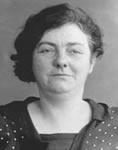aka “The Torso Murders”
In the roaring 1920s, Cleveland thrived as a bustling city teeming with new immigrants and a robust workforce fueling its industrial engine. The city’s elite resided in opulent mansions along Millionaire’s Row, funding numerous cultural and educational institutions. But as the Great Depression struck in 1929, Cleveland’s fortunes plummeted. Throughout the 1930s, city leaders strove to uplift their struggling populace and restore civic pride, culminating in hosting the Great Lakes Exposition and the Republican National Convention in 1936.

Amidst this backdrop of economic recovery, a sinister figure cast a long shadow over Cleveland. From 1934 to 1938, one of the most prolific and gruesome serial killers in history terrorized the city, diverting attention from its nascent prosperity. Thirteen victims met brutal fates, each decapitated, with most beheaded while still alive. The killings ceased as abruptly as they began, and despite Safety Director Eliot Ness’s claims of solving the crimes, no suspect was ever officially identified. The Kingsbury Run Murders remain an enduring mystery in America’s criminal history.
Kingsbury Run, a prehistoric riverbed stretching from The Flats to East 90th Street, was a grim locale in the 1930s. Bordered by Woodland and Broadway Avenues, it was a desolate area populated by the dispossessed of the Great Depression, living in squalor amidst a makeshift “hobo jungle.” The adjacent “Roaring Third” police precinct was notorious for its bars, brothels, and gambling dens. It was within this grim setting that Cleveland’s most infamous murder case unfolded.
In September 1934, a young man discovered the remains of a woman in her mid-30s along the shores of Lake Erie. Her torso, with thighs attached but amputated at the knees, bore evidence of a chemical preservative that had turned her skin tough and leathery. Known as the “Lady of the Lake,” she remained unidentified and was later recognized as the first victim in a series of brutal murders.
September 1935 saw the discovery of a decapitated and emasculated white male at the base of Jackass Hill. Identified through fingerprints as Edward Andrassy, his body bore rope burns and had been drained of blood. Nearby, a second decapitated and chemically preserved body was found, belonging to an unidentified 40-year-old white male.
In January 1936, parts of a woman’s body were found wrapped in newspaper and placed in baskets near Central Avenue. Identified through fingerprints as Florence Polillo, a waitress and barmaid, her decapitation occurred after rigor mortis set in.
The macabre discoveries continued in June 1936, when a white male’s head was found wrapped in trousers near the East 55th Street bridge. The body, drained of blood and adorned with six tattoos, was never identified despite being displayed at the Great Lakes Exposition.
July 1936 brought the gruesome find of a decapitated 40-year-old male in the woods near Clinton Road. September saw another grisly discovery: a man’s torso in Kingsbury Run, with expert disarticulation indicating the killer’s anatomical knowledge. The victim remained unidentified.
The media frenzy escalated as six brutal killings in one year yielded no clues or suspects. Under mounting pressure, Eliot Ness launched a massive police investigation, interviewing thousands but uncovering little.

In February 1937, a woman’s torso washed up on the shore, decapitated post-mortem. June saw the discovery of a black woman’s skeletal remains, unofficially identified as Rose Wallace. July’s labor unrest in the Flats led to the find of another mutilated male body in the Cuyahoga River, further indicating the killer’s escalating brutality.

April 1938 marked the recovery of a woman’s leg along the Cuyahoga River, followed by her torso in burlap bags. For the first time, drugs were detected in a victim’s system. In August, two women’s bodies were found, tauntingly placed in view of Ness’s office.
Ness’s controversial raid on Kingsbury Run’s homeless encampments in August 1938, involving the destruction of shantytowns, failed to quell public fear or solve the murders. The arrest of Frank Dolezal in 1939, who died under suspicious circumstances in custody, did little to dispel doubts about the true identity of the “Mad Butcher.”
The Kingsbury Run Murders remain an enigma, with lost records and lingering suspicions. Eliot Ness believed he knew the killer, who allegedly taunted him for years. The case, steeped in rumor and speculation, endures as one of America’s most perplexing unsolved crimes.
